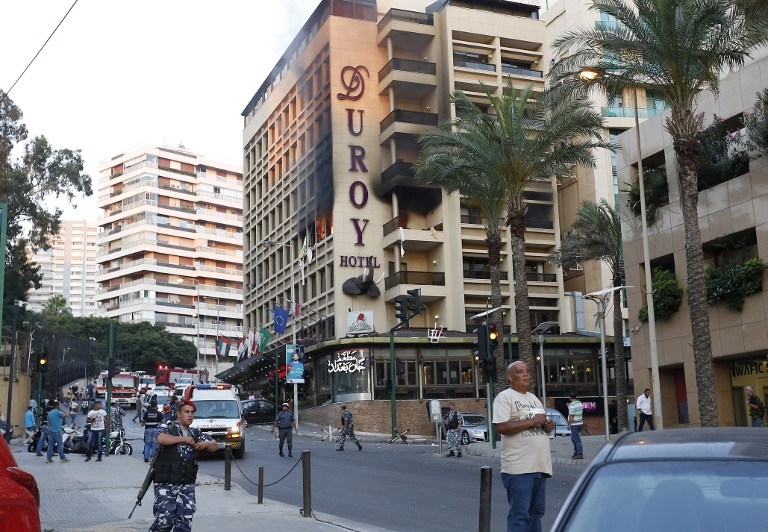Lebanon suicide bomber was a wanted Saudi

A suicide bomber who blew himself when police raided his hotel room in Beirut was a Saudi wanted by authorities in the kingdom, an informed source in Riyadh said Thursday.
"His name is Abdul Rahman Nasser al-Shenifi, 20, and he was wanted by the interior ministry," the source close to security authorities told AFP.
But the bomber did not figure on the kingdom's list of most-wanted militants, the source added.
The man detonated his explosives when Lebanese security forces stormed his room of the Duroy Hotel on Wednesday, killing himself and wounding 10 others.
An accomplice who survived the blast was also a Saudi, according to Lebanese authorities.
On Thursday, Parliament Speaker Nabih Berri renewed a call for 3,000 new Army recruits and an additional 1,000 members each for the country's General Security and Internal Security Forces in the wake of security concerns, The Daily Star reported.
“We have no choice but to shore up the Army and security agencies. When these institutions are strong, terrorists will not be able to do anything,” Berri was quoted as saying.
Wednesday's bombing came two days after a bomber blew himself up at an army checkpoint in Beirut's southern suburb, leaving two people dead, including a General Security sergeant, and 20 others injured.
Last Friday, a suicide bombing at in the eastern Lebanese town of Dahr al-Baidar killed a police officer. On the same day, a French national arrested on suspicion of plotting to carry out suicide bombings in Lebanon on behalf of the militant group Islamic State of Iraq and the Levant, or ISIL.
That is the same group that has spearheaded the offensive by Sunni Arab militants that has swept up a big swathe of northern and north-central Iraq this month and also made gains in neighbouring Syria.
Middle East Eye propose une couverture et une analyse indépendantes et incomparables du Moyen-Orient, de l’Afrique du Nord et d’autres régions du monde. Pour en savoir plus sur la reprise de ce contenu et les frais qui s’appliquent, veuillez remplir ce formulaire [en anglais]. Pour en savoir plus sur MEE, cliquez ici [en anglais].




